|
Getting your Trinity Audio player ready... |
What is a Medicine Mixing Tank?
medicine mixing tank: A medicine mixing tank is a specialized device used in the pharmaceutical industry to blend and combine various ingredients required for the production of inner fill materials in capsules or other medicinal forms. This tank is designed to handle various processes such as heating, melting, blending, and mixing the ingredients, allowing manufacturers to produce a homogeneous mixture that meets specific formulation requirements.
The design of a medicine mixing tank allows it to heat and mix ingredients simultaneously, facilitating a more efficient and effective production process. The uniformity of the mixture is critical in ensuring the quality and consistency of the final medicinal product, which can impact both its efficacy and safety.
What Are the Benefits of Using a Medicine Mixing Tank?
Using a medicine mixing tank provides several advantages that contribute to enhanced efficiency, product quality, and operational ease. Here are some of the key benefits of using these tanks:
• Uniform Mixtures
One of the primary benefits of using a medicine mixing tank is the ability to achieve uniform mixtures. These tanks are specifically designed to ensure that all ingredients are blended thoroughly, resulting in a consistent and homogeneous mixture. This is particularly important in the pharmaceutical industry, where precision and uniformity are critical for the effectiveness of the final product.
• Cost-Effectiveness
While the initial investment in purchasing and installing a medicine mixing tank may be relatively high, it proves to be a cost-effective choice in the long run. The increased efficiency and reduced labor costs associated with automated mixing can offset the upfront cost. Moreover, the improved consistency and quality of the product reduce the likelihood of costly errors or product recalls.
• Ease of Operation
Operating a medicine mixing tank is straightforward and user-friendly. The process typically involves adding the specified ingredients into the tank in the correct proportions, and then allowing the tank to perform the necessary heating and mixing processes. The automation of these tasks simplifies the production process and reduces the need for manual labor.
• Safety Benefits
The use of a medicine mixing tank enhances safety by minimizing the need for direct human involvement in the mixing process. This reduces the risk of accidents or injuries associated with manual mixing and handling of potentially hazardous ingredients. The automated nature of the mixing process ensures that it is carried out in a controlled and safe environment.
• Low Maintenance Costs
Maintenance of a medicine mixing tank is relatively easy and inexpensive compared to other types of industrial machinery. Regular cleaning and maintenance procedures are designed to be efficient, ensuring minimal downtime and reduced operational costs over time.
What Are the Drawbacks of Using a Medicine Mixing Tank?
Despite the numerous benefits, there are some drawbacks to using a medicine mixing tank. The most notable limitation is:
• Limited to Certain Ingredient Types
A medicine mixing tank is typically suitable only for mixing specific types of ingredients, such as liquid, suspension, or emulsion solutions. If the ingredients are in a different form (e.g., powders), the tank may not be suitable without additional modifications or equipment. This restricts the versatility of the tank in certain manufacturing processes.
What Are the Parts of a Softgel Medicine Mixing Tank?
A softgel medicine mixing tank is comprised of several key components that work together to ensure the effective and efficient mixing of ingredients. Here are the primary parts of a typical softgel medicine mixing tank:
• Mixing Tank
The mixing tank is the core component where the actual mixing process occurs. Ingredients are added to this tank, where they are blended together to form the final mixture. It’s important to accurately measure the ingredients before adding them to the tank to ensure the correct formulation.
• Rotating Stainless-Steel Knives
The rotating stainless-steel knives inside the tank are responsible for chopping, blending, and mixing the ingredients to form a homogeneous mixture. These blades rotate at high speeds to ensure that all ingredients are evenly distributed and blended.
• Motor
The motor powers the rotating blades within the mixing tank. It converts electrical energy into mechanical motion, which drives the movement of the stainless-steel knives and facilitates the mixing process.
• Electrical Unit
The electrical unit provides the necessary power for the operation of the mixing tank. It is an essential component for ensuring that the machine functions properly and efficiently.
• Control Unit or System
The control unit allows the operator to configure the mixing parameters, including temperature, speed, and mixing time, based on the specific requirements of the production process. It acts as the interface through which the operator monitors and controls the entire operation.
• Lid
The lid is used to cover the mixing tank, particularly during the mixing process, to prevent ingredients from spilling and to maintain the proper temperature within the tank.
• Discharge Chute
The discharge chute is used to release the homogenous mixture after the mixing process is complete. It ensures that the mixture flows out of the tank in a controlled and orderly manner.
How Does a Softgel Medicine Mixing Tank Work?
A softgel medicine mixing tank works through a series of carefully executed steps to ensure that the ingredients are mixed properly and that the final mixture meets the required specifications. Here’s a step-by-step guide on how the process works:
• Step One: Preparation Stage
Before starting the mixing process, the tank and all its components must be thoroughly checked to ensure they are in proper working condition. The ingredients for the medicine must be measured carefully according to the recipe or formulation requirements. Once everything is ready, the machine is powered on and allowed to warm up in standby mode.
• Step Two: Filling the Tank
Once the tank is prepared, the ingredients are loaded into the mixing tank. The lid is secured tightly to prevent spills, and the mixing process begins. Depending on the nature of the ingredients, heat may be applied to melt any solid ingredients into a liquid state. The rotating blades inside the tank begin to break down and blend the ingredients, ensuring that they are evenly distributed and well mixed.
• Step Three: Discharge of the Mixture
After the ingredients have been thoroughly mixed and homogenized, the resulting mixture is released from the tank through the discharge chute. The mixture is now ready for use in the production of softgel capsules or other medicinal products.
What is a Gelatin Melting Tank?
A gelatin melting tank is a specialized device used in the production of softgel capsules. This tank is designed to melt and mix the gelatin ingredients required for creating the softgel shells. It heats and melts the gelatin, ensuring that the mixture becomes homogeneous and uniform before being cooled and solidified into the desired capsule shape.
How Does a Gelatin Melting Tank Work?
A gelatin melting tank operates on the principle of heating, mixing, and melting the gelatin ingredients to create a syrup that can later be solidified into softgel capsules. The following steps outline how a gelatin melting tank works:
• Step One: Preparation
Before starting, the gelatin ingredients (gelatin, water, and other additives like colorants) must be prepared. These ingredients are measured according to the required formulation and then loaded into the material hopper. The machine is then powered on and allowed to warm up.
• Step Two: Melting and Mixing
Once the machine is ready, the ingredients are fed into the melting tank. The temperature of the tank gradually increases to the level required to melt the gelatin. The tank features rotating mixers and blades that blend the ingredients as they heat up, ensuring the mixture forms a uniform syrup.
• Step Three: Syrup Discharge
Once the gelatin has melted and mixed into a uniform syrup, it is discharged from the tank through an outlet. At this stage, the syrup must be kept at the proper temperature to prevent it from solidifying prematurely.
What Are the Parts of a Gelatin Melting Tank?
The key components of a gelatin melting tank include:
• Motor
The motor drives the moving parts of the tank, including the mixers and blades. It provides the mechanical energy needed to rotate these components.
• Stirring Puddle
The stirring puddle prevents the formation of bubbles during the melting and mixing process and helps to accelerate the melting of the gelatin ingredients.
• Control System
The control system allows the operator to configure the melting and mixing parameters, including temperature, speed, and mixing duration. The system provides a user-friendly interface for monitoring the machine’s operation.
• Universal Wheels
These wheels allow for the mobility of the gelatin melting tank, making it easy to move the machine to different locations within the facility.
• Thermometer
The thermometer is used to monitor and control the temperature of the ingredients as they are being melted and mixed. Proper temperature control is crucial for achieving the right consistency and preventing premature solidification.
• Vacuum Mixer
The vacuum mixer ensures that the ingredients are mixed thoroughly and dissolve efficiently, especially when dealing with high-viscosity mixtures.
• Flange
The flange seals the ends of the tank and helps prevent spills during the melting process. It also reinforces the structure of the machine.
• Speed Reducer
The speed reducer adjusts the mixing speed, allowing the operator to control the rate at which the ingredients are mixed.
• Tank
The tank is the central unit where the melting, mixing, and heating of the gelatin ingredients takes place.
What Are the Benefits of a Gelatin Melting Tank?
A gelatin melting tank offers several benefits to manufacturers, including:
• Easy to Use
The machine features a control panel and user-friendly interface, making it easy for operators to manage and adjust the machine’s settings.
• Durability
Made from durable materials like stainless steel, a gelatin melting tank is built to last for many years, even with heavy usage.
• Increased Production Efficiency
By automating the gelatin melting and mixing process, the tank helps speed up production, increasing output and reducing labor costs.
• Time-Saving
The automated nature of the gelatin melting tank saves valuable time by eliminating manual labor and accelerating the mixing process.
What Are the Disadvantages of Using a Gelatin Melting Tank?
Despite its many benefits, the gelatin melting tank does have some drawbacks. For instance, there are safety concerns related to the heating system, as improper handling of the tank could result in burns or other injuries. As a result, safety precautions must be carefully followed.
Is There a Difference Between a Medicine Service Tank and a Gelatin Service Tank?
Yes, there is a difference between a medicine service tank and a gelatin service tank. The medicine service tank is designed to hold medicinal products, while the gelatin service tank is used to hold gelatin for softgel capsules. Though both tanks serve the purpose of holding materials before they are processed, the content they hold and the specific needs of the production process differ. Both tanks are essential in the production line, ensuring that the materials are properly stored before moving to the next stage of processing.



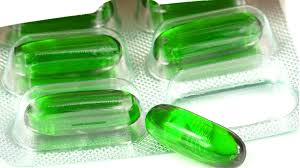

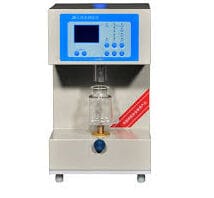
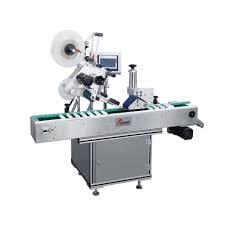
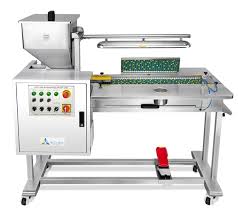
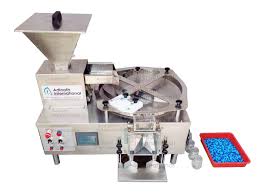
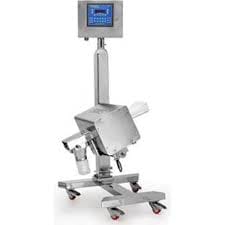






Leave a Reply